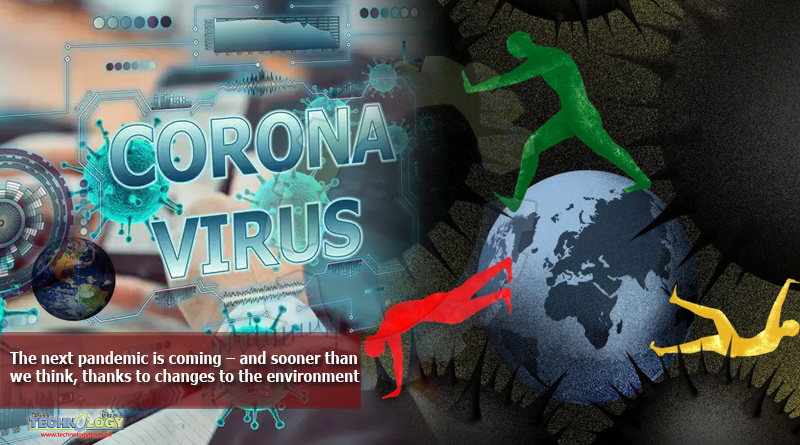
A virus leaped out of the contagion models he has studied for years and into everyday life in the form of a global pandemic.
He is also frustrated that the work of his colleagues has mostly been ignored — for years, communicable disease experts have been warning of exactly this scenario.
“There’s definitely a sense that ‘you were warned’ and we had a couple of dry runs of this,” Dr Reid, an associate professor at the University of Queensland, says.
“There’s not too many surprises in what’s happening. This is basic ‘infectious diseases 101.'”
At the time of writing, COVID-19 has affected nearly 5 million people globally, killing more than 300,000.Coronavirus questions answeredBreaking down the latest news and research to understand how the world is living through an epidemic, this is the ABC’s Coronacast podcast.
Governments are having to chart a path between more deaths and one of the worst recessions in history. Meanwhile, World Health Organisation officials say the virus may be with us forever.
Although it seems like a freak biological phenomenon — a so-called “black swan” event — the emergence and spread of coronavirus is anything but.
In fact, warnings of a pandemic eerily similar to SARS-CoV-2 appear in published research and reports spanning multiple decades.
The leader of the US government’s Ebola response warned in 2016 a serious pandemic from an airborne infectious disease “was a question of when, not if.”
In 2017, the research team who discovered the origins of SARS — which shares 80 per cent of its genetic sequence with SARS-CoV-2 — warned that all the ingredients were in place for the virus to strike again, as its close relative did just two years later.
And as recently as September last year — just a few months before COVID-19 was detected in China — an independent watchdog set up by the WHO warned the world was “grossly” unprepared for the “very real threat” of a pandemic.
But even more alarming is what the new coronavirus indicates about the future.
Researchers say human impacts on the natural world are causing new infectious diseases to emerge more frequently than ever before, meaning the next pandemic — one perhaps even worse than COVID-19 — is only a matter of time.
“We know that it’s a probability, not a possibility,” Dr Reid says.
“If you don’t resolve the conditions that generated the problem, then we sit waiting for the next probability equation to come through.
“And it will, and sadly it’s possible that it’s in our lifetime.”
Nearly all emerging pathogens like COVID-19 come from “zoonotic transfer” — essentially, when a virus present in animals jumps to infect humans.
The US Centers for Disease Control and Prevention estimates three out of every four new infectious diseases, and nearly all pandemics, emerge this way.
Researchers have counted around 200 infectious diseases that have broken out more than 12,000 times over the past three decades. On average, one new infectious disease jumps to humans every four months.
Animal species like civet cats (SARS), camels (MERS), horses (Hendra), pigs (Nipah) and chimpanzees (HIV) have all been implicated in the spread of new viruses at different times.
SARS-CoV-2, the virus at the centre of the current pandemic, is thought by some researchers to have been carried by the critically endangered pangolin — an elusive, nocturnal animal that has been virtually eaten to extinction.
Although these animals are a natural reservoir, the research is clear: human societies and practices are almost always responsible for the spillover of new diseases.
“Disease emergence is all about increased opportunity for contact… it’s all about human impact on the natural system that increases the contact between humans and animals,” says Hume Field, a veterinarian who helped trace the animal origins of the Hendra virus in Australia and the SARS virus in China.
These contacts at the human-animal interface are varied and complex.
Cutting into forests or previously undisturbed ecosystems, often to expand agricultural land, drives out pathogens that were locked in the wild. Biodiversity and habitat loss helps diseases spread among wild animals.
Dense human populations living together in greater numbers in cities facilitate their spread.
Meanwhile, the intensification of livestock farming, and increased hunting and trading of wildlife are mixing animals like never before.
“Land use change, demographic change and agriculture,” Dr Reid explains.
“They are three of the 10 drivers for disease emergence, and everything else in the top 10 is associated with those three things.”
A group of scientists writing in the Lancet in 2015 concluded that far-reaching changes to the Earth’s natural systems posed a growing threat to human health, naming emerging diseases alongside climate change as one of these threats.
For these researchers, governments and health authorities need to address what drives mass epidemics rather than just respond to individual diseases if we want to avoid the next outbreak.
Originally Publish at: https://www.abc.net.au/
